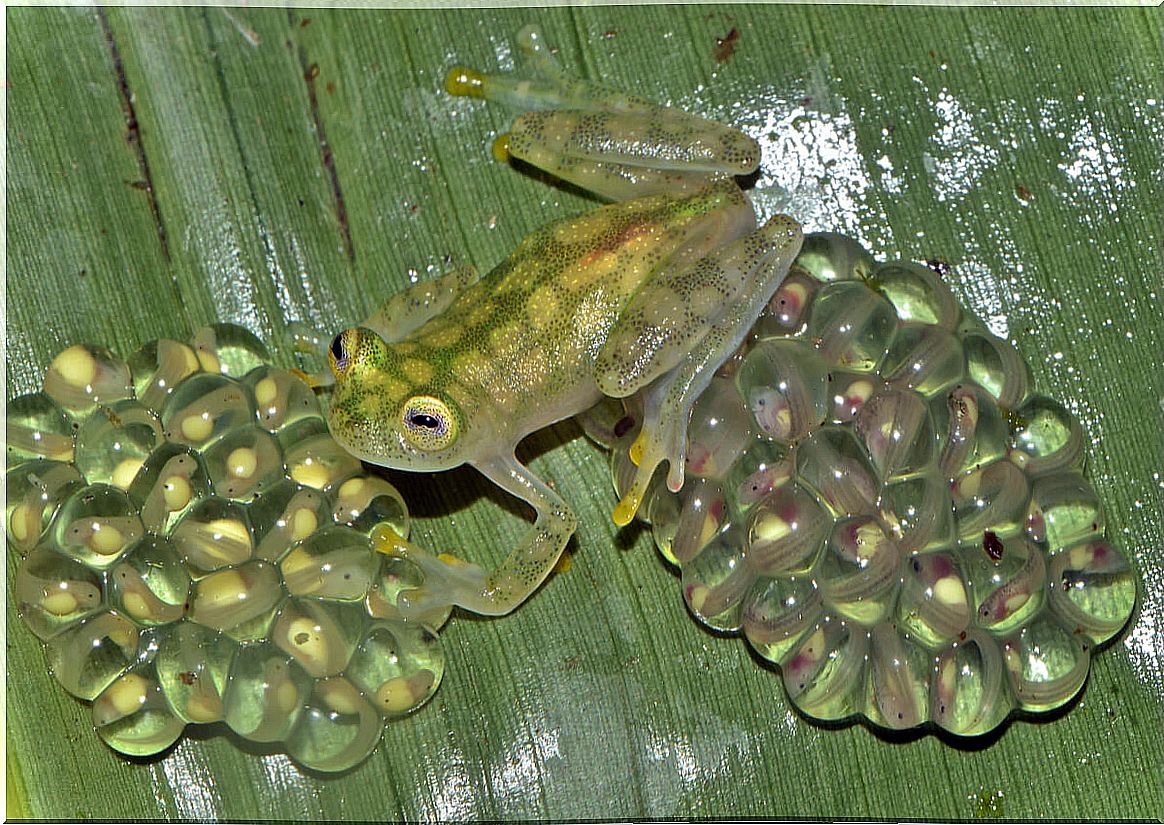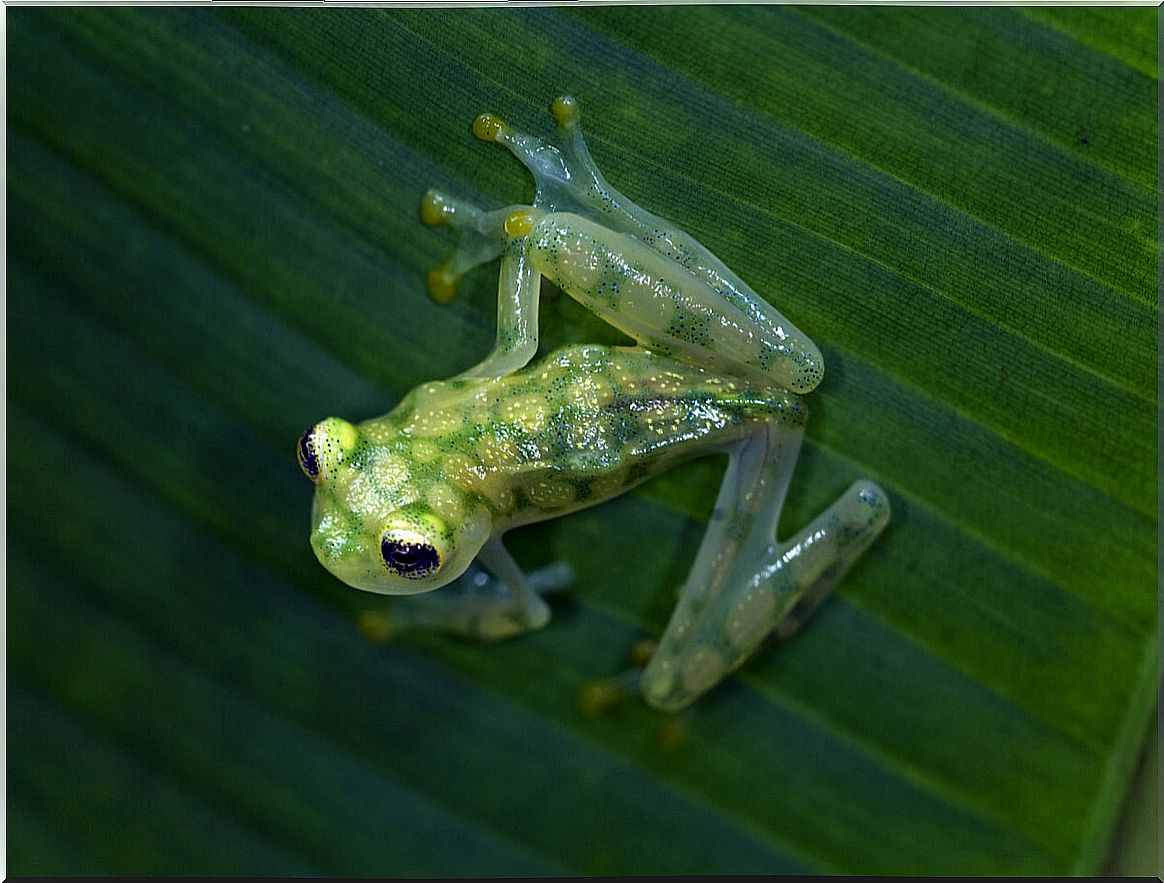The Incredible Morphology Of Glass Frogs

The biology of anuran amphibians has fascinated researchers for decades. These delicate animals, despite being completely dependent on water, have developed behavioral and morphological strategies to survive in a habitat as hostile as the terrestrial environment. This has given rise to countless forms and characteristic behaviors, and glass frogs are the living example of this.
But how do these fragile amphibians survive harsh environments and predators? Why is it due to its lack of coloration and its semi-transparent appearance? If you want an answer to these and many other questions, keep reading.
A crystal family
First of all, it is necessary to note that the term “glass frog” does not refer to a species or a genus, but to an entire family of amphibians. All of these delicate frogs belong to the Centrolenidae family .
Within this grouping itself we find two well-distinguished subfamilies: Centroleninae, which comprises multiple genera (more than nine), and Hyalinobatrachinae, with only two genera included in it.
In order not to get lost in phylogenetic trees and taxonomic relationships, we are going to focus on a “type species” that encompasses the general traits of the family: Centrolene savagei. According to the professional portal amphibianweb.org , some characteristics of this unique amphibian are the following:
- It is a small frog, since it ranges from 20 millimeters to 24 millimeters in length (the females are larger).
- Its coloration is green with a semitransparent tone, with white and green pits all over the body.
- The diameter of the eyes occupies up to 30% of the surface of the head, a not inconsiderable proportion.
- The length of the tibia (leg bone) corresponds to almost 50% of the total measurement of the animal, which shows its complete adaptation to locomotion by jumping through the arboreal environment.
As we can see, the most distinctive features of the typical glass frog are its small size, its semitransparent coloration and its large eyes. Still, this family of amphibians keeps much more secrets than a peculiar appearance.

Committed parents
Some species of glass frog like Hyalinobatrachium valerioi exhibit truly amazing parental care behaviors. These brave males, native to the tropical forests of Costa Rica, Panama and Ecuador, remain with the eggs laid by the female until they hatch.
Despite providing hydration, the mechanical defense of the parents of this species is essential, as they can respond by kicking predators that approach the spawn (such as wasps). Studies have shown that the lack of a caring father significantly decreases the survival of the offspring.
A confusing coloring
Scientists are still not clear about the reason for the semitransparent ventral coloration of these amphibians. What has been hypothesized is that the presence of spots on its back could try to imitate the eggs laid by the female.
This would cause predators to focus their attention on the male’s body, attacking him rather than the mate’s offspring. Although this means a decrease in the individual survival of the father, it pays off, since his offspring have a better chance of getting ahead.
An uncertain future
Despite their impressive adaptations for survival, the future of glass frogs is uncertain. According to the IUCN, many of the species in this family are in a vulnerable (VU), endangered (EN) or critically endangered (CR) status.
This is due, in part, to the fragmentation of the natural habitats of the species due to the urbanization of territories and the massive felling of trees to establish fields and other structures. These species are highly specialized to the environment in which they inhabit, and therefore, any minor alteration in their ecosystem can be lethal for them.

Children above all
As we have seen, this is a clear example of a family of amphibians that live by and for their offspring. This can be explained because the female usually produces an average of eggs less than 20 units, when other anurans count more than three thousand eggs per clutch (as is the case of the common toad).
Thus, each little tadpole is gold, and it is the father’s job to protect it with his life until it hatches. In the natural world, individual survival is undervalued, since it is always the permanence of genetics through offspring that encodes behaviors.









